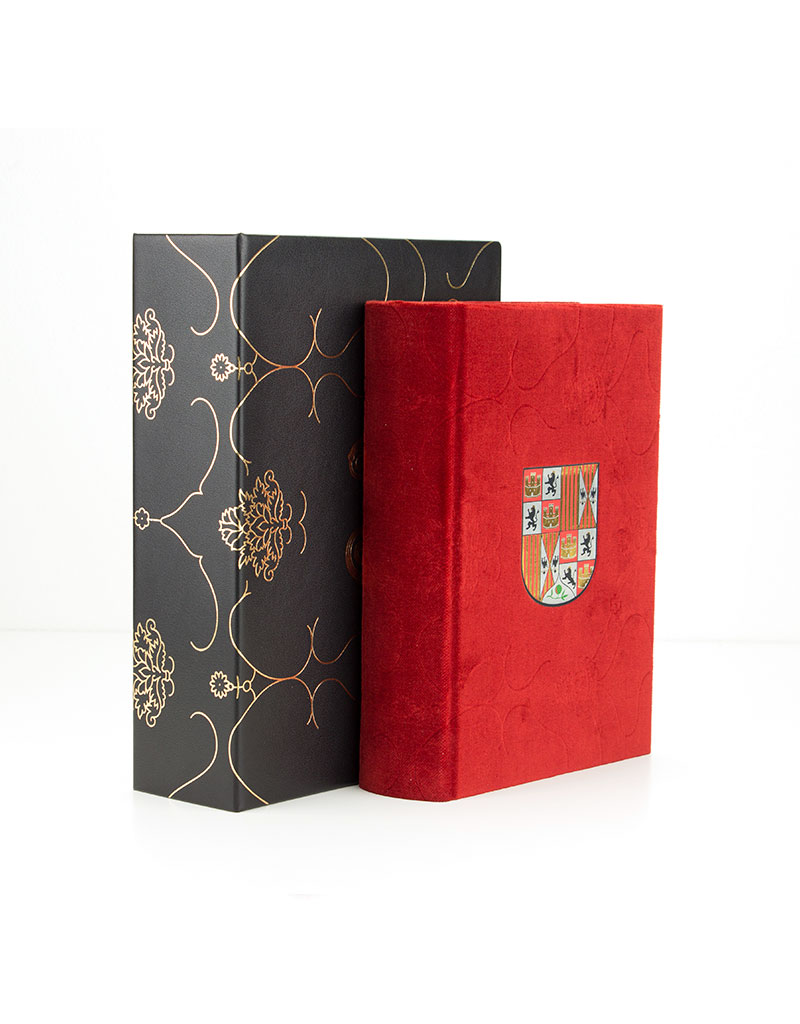Cleveland Museum of Art, Cleveland, MS 21/63.256; Gent/Brughes, End of 15th century
Stundenbuch der Isabella von Kastilien
The Hours of the Flemish Masters are undoubtedly one of the most elegant Flemish manuscripts of the Renaissance. The manuscript was created in the 15th century in Bruges and Ghent in a collaboration between the most renowned Flemish book painters of their time. On 558 pages in the format of 23.5 x 17.3 cm there are 40 exquisitely decorated full-page miniatures, 10 half-page miniatures and 24 calendar medallions as well as more than 300 border decorations.

A Prayer Book for the Queen of Spain
This phantastic manuscript was made for Queen Isabella I of Castile (1451-1504), also called Isabella the Catholic. Isabella, together with her husband, King Ferdinand V, is now known through her association with Christopher Columbus and the „discovery“ of the American continent.
On the first page of the manuscript the shield and the logo of Isabella and Ferdinand can be found and as such confirm them as the owners. However, it is still not clear who commissioned the work and out of which reason.
Most sources think that it could have been a late wedding gift or a consolation gift due to the death of one of Isabella’s and Ferdinand’s sons.
The Hours of the Flemish Masters
15th Century
The exquisitely enriched miniatures
The Hours of the Flemish Masters are undoubtedly one of the most elegant Flemish manuscripts of the Renaissance. The manuscript was created in the 15th century in Bruges and Ghent in a collaboration between the most renowned Flemish book painters of their time. On 558 pages in the format of 23.5 x 17.3 cm there are 40 exquisitely decorated full-page miniatures, 10 half-page miniatures and 24 calendar medallions as well as more than 300 border decorations.
The Flemish Masters
Detailed trompe-l‘oeil decorations, expressive miniatures, brilliant colors and lush landscapes: originated at a time when Flemish miniatures were highly popular all over Europe, the opulent Hours of the Flemish Masters are a true masterpiece of its genre – its iconographic and decorative apparatus represents a highlight of the famous Flemish style. The manuscript originates from the workshops of the most famous painters of the Ghent-Bruges school, and was made for Queen Isabella I of Castile, a great admirer of Flemish book art.
Flower Decoration as Trompe-l’oeil
This sumptuous codex, besides its masterly miniatures, is characterized by its edge decorations, composed of a variety of flowers in a loose streak pattern, wavy acanthus leaves, birds and butterflies. These realistic elements cast shadows on the colored grounds of the edges, which give rise to a trompe-l‘oeil effect; a significant innovation of the painters of the Ghent-Bruges school.
The Edition
It is not known what Happened with the book of Hours after Isabella’s death in 1504. Only in the late 19th Century traces of the Manuskript are to be recovered, when they reappear in the collection of Baron Edmond de Rothschild in Paris, member of the powerful Banker family Rothschild. In 1963 it was then acquired by the Cleveland Museum of Art (Cleveland, USA), where it is to be found under the bookshelf MS 21/63.256. The excellent condition of the original manuscript makes this facsimile edition of the Book of Hours an exceptional joy for bibliophiles.



